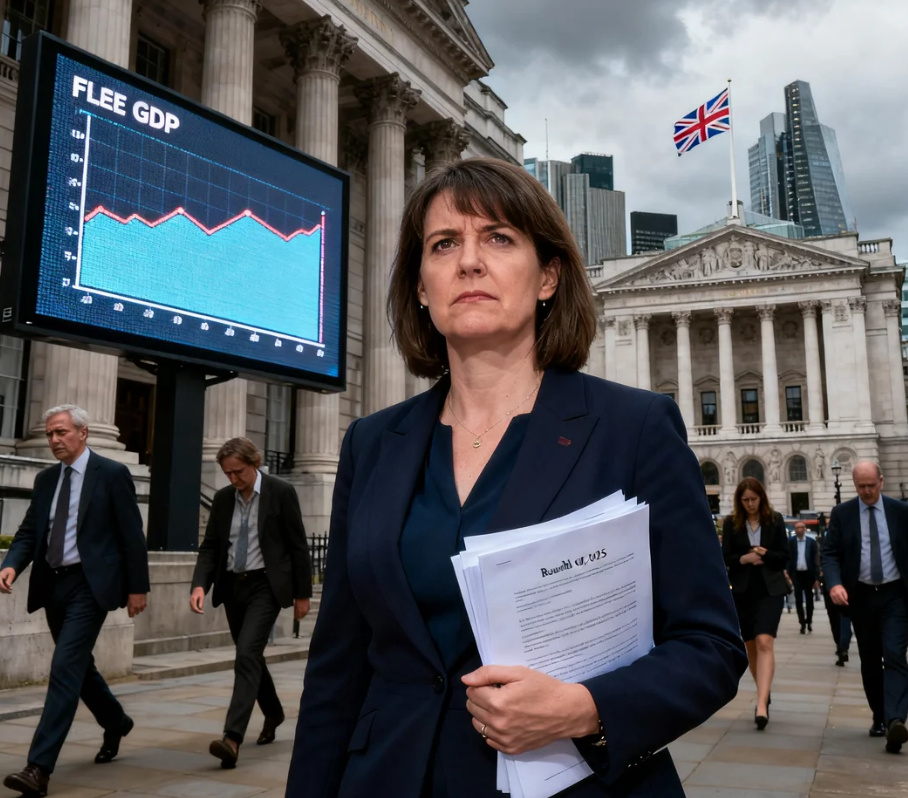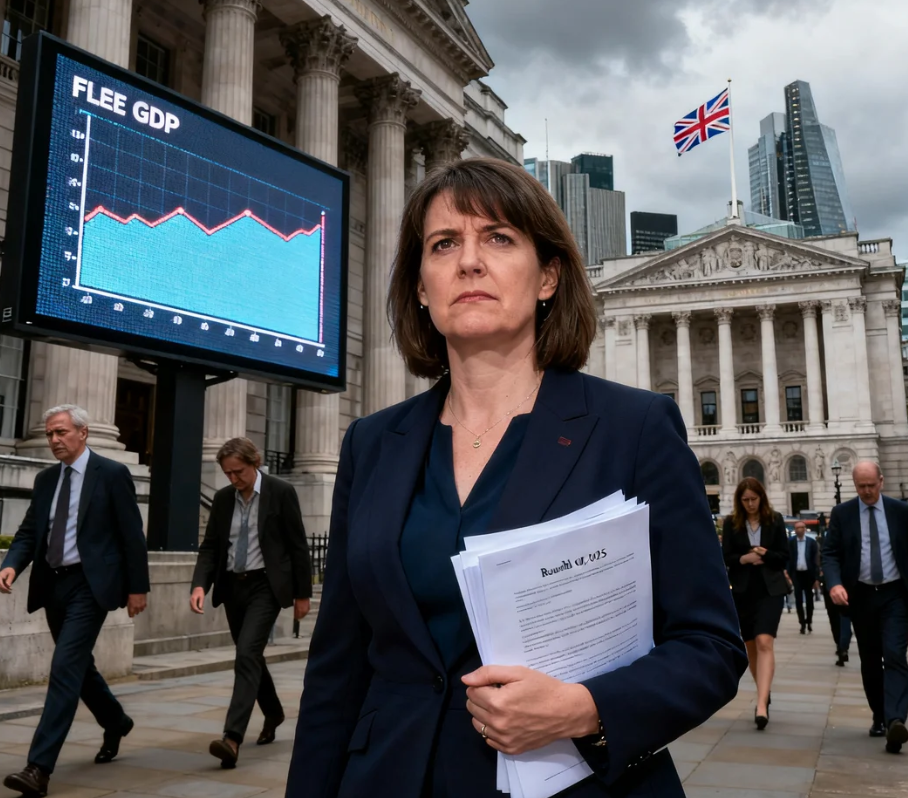The U.K. economy hit a wall in July, with growth flatlining after a stronger-than-expected run earlier this year—casting fresh uncertainty over Chancellor Rachel Reeves’ high-stakes Autumn Budget.
Data from the Office for National Statistics, released Friday, showed zero growth in July, broadly in line with economists’ forecasts and following a 0.4% rise in June. The slump was driven largely by a 0.9% fall in industrial output, while services and construction eked out modest gains.

The latest figures follow a mixed picture in the first half of 2025: GDP expanded by 0.7% in the first quarter, but slowed to 0.3% in Q2, despite briefly claiming the fastest growth rate among the G7. Economists now expect that momentum to fade further.
“After a surprisingly robust second quarter, all signs point to a slowdown in the back half of the year,” said Sanjay Raja, Deutsche Bank’s chief U.K. economist. “Trade-fronting, stockpiling, and a pullback in public sector spending will weigh on GDP through the autumn.”
Reeves’ Balancing Act
For Reeves, the timing could hardly be worse. With the Autumn Budget set for Nov. 26, the finance minister faces the twin challenge of delivering on her promise to revive growth while keeping public debt in check. She has pledged that spending will be funded by tax revenues rather than borrowing—a stance that raises the prospect of politically fraught tax hikes.
“The stagnation in real GDP in July shows just how difficult it is for the economy to gain momentum,” said Paul Dales, chief U.K. economist at Capital Economics. “And that’s before potential further tax increases come into play.”
Adding to the challenge is stubborn inflation. Consumer prices rose 3.8% in July, higher than expected and enough to keep pressure on the Bank of England. The central bank, which trimmed rates in August for the first time in four years, is widely expected to hold steady at its Sept. 18 meeting. Attention is already shifting to its Nov. 6 decision—just weeks before Reeves unveils her budget.
“The Bank is in a difficult spot,” said Fabio Balboni, senior European economist at HSBC. “Inflation resilience makes it harder to cut rates further, while fiscal pressures leave little room for maneuver.”
Carsten Brzeski, global head of Macro at ING, noted that while his team still sees scope for a November rate cut, the narrow 5–4 vote to ease policy last month shows how divided the Monetary Policy Committee has become.
With growth stalling, inflation proving sticky, and the Autumn Budget looming, Reeves now faces perhaps the toughest test of her tenure: convincing both markets and voters that she can deliver stability without stifling an already fragile economy.

Leave a Reply